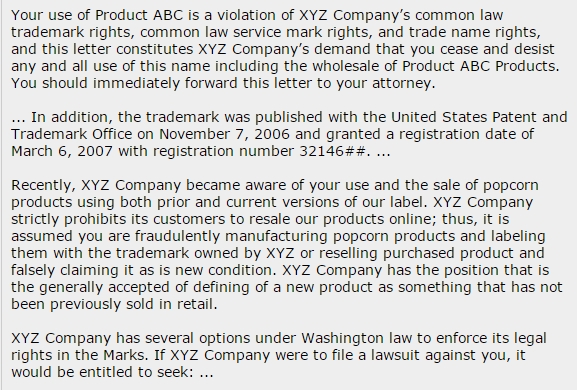If you’ve ever wondered how a new Gucci bag listed on eBay costs significantly less than the same bag offered through a Gucci store, the reason may include retail arbitrage.
In many cases, the practice is questionable and can land you in a lot of trouble.
What is retail arbitrage?
Retail arbitrage is defined as buying trademarked items, usually in bulk, from a retailer and then reselling those goods at a lower price.
Typically, the reselling is performed through online shopping sites such as eBay or Amazon; however, it can also occur on the reseller’s own website- or even at a yard sale he is having.
As opposed to retail arbitrage (RA), traditional retailers typically sign purchasing contracts with the manufacturers of the trademarked items before they are allowed to sell those items. In this way, the manufacturer is guaranteed a given percentage of profits from the sale of the items.
Also, the manufacturer works with the retailers to ensure that the items are presented a certain way, and any promotions that are launched are in compliance with the manufacturer’s desired brand image.
When a reseller purchases from a retailer with the intent of reselling, that reseller becomes, in effect, a wholesaler. Selling items as an unauthorized wholesaler is rife with legal landmines, including possible trademark dilution, selling to prohibited territories/countries, and inducement of breach of retailer contract (known legally as “tortious interference with contract”).
Retail arbitragers have even been accused of passing off used goods as new by manufacturers. This is because technically, a purchased retail good, even if it is still in the original wrapping, is legally defined as used.
Is retail arbitrage illegal?
If you currently engage in RA, and even if you don’t touch your inventory because it is all being handled by Fulfillment by Amazon (FBA) or some other drop-ship company, don’t think that, one day, a manufacturer won’t contact you. This post was published on an Amazon discussion forum after someone received a cease-and-desist letter from a popcorn manufacturer:
What makes these letters really scary is not that they ask you to cease and desist, which simply means taking down your listings and/or deactivating your store. What makes them scary is that you may have just purchased thousands of dollars of said inventory. Unless you quietly sell your merchandise at a yard sale or on Craigslist, you stand to lose your investment.
This is why you need to be especially careful when engaging in RA.
Luckily, if you follow the following “rules of engagement,” you are less likely to incite the anger of both manufacturers and retailers, and to get into legal trouble.
How to play it safe with retail arbitrage.
- Purchase non-trademarked bulk items. While it may be a challenge, you can purchase bulk items that are not branded with a major label like Gucci, Prada, Jimmy Choo, etc. Designer items are especially prone to surveillance by their respective manufacturers, so choose lesser known brands or even generics.
- Don’t sell knock-off or counterfeit goods. Even if you purchased them from a major retailer like Wal-mart, selling counterfeit goods will land you in legal trouble. Manufacturers and business can sue you for trademark infringement or, at the very least, notify marketplaces like Amazon and eBay of your activities. This will result in your accounts being suspended.
- Understand the first sale doctrine. In the eyes of the law, the first sale doctrine means that any good that you have procured legally, and which is authentic, can be re-sold by you. This is a law that you can cite should you receive a cease-and-desist letter in the mail. Check the U.S. Supreme Court’s recent Kirtsaeng ruling for more information.
- Understand retail contracts. Having just pointed out the first sale doctrine, know that it applies more to copyrights than to trademarks. When it comes to trademarked goods, many manufacturers have their own trade agreements in place with select “authorized” wholesalers and retailers. If you aren’t one of those authorized distributors, expect a notice to appear in your email or mailbox.
- Don’t make it obvious. If you frequent certain stores, especially small stores, the merchants will probably call you out if you are routinely buying hundreds or thousands of dollars of merchandise there on a regular basis. This is because manufacturers often stipulate that retailers not sell their items “at wholesale or otherwise for resale.” Due to the terms of their contracts with manufacturers, retailers may eventually refuse to sell to you. To prevent this problem, vary your purchases at select stores and frequent a wider range of stores.
- Create your own private label products. Although some individuals manage to make a good income from RA, the journey is often rife with legal hurdles. To avoid these issues, you are best advised to start generating private label products (PLPs). This is performed by working directly with a manufacturer and having the factory generate bulk items for you to sell. I talk more about this selling approach here.
Can retail arbitrage work for you?
While my personal opinion of RA is that it has limited potential to make you a steady and full-time income, there are resellers out there who make a good living by using this approach.
Jessica Larrew is one such reseller who has made it in RA; Cynthia Stine is another.
The key to success in this field is to do everything by the books and not incite the ire of major designers and manufacturers. It also helps to know something about trade law and how to cite it in case you are flagged as a reseller.

